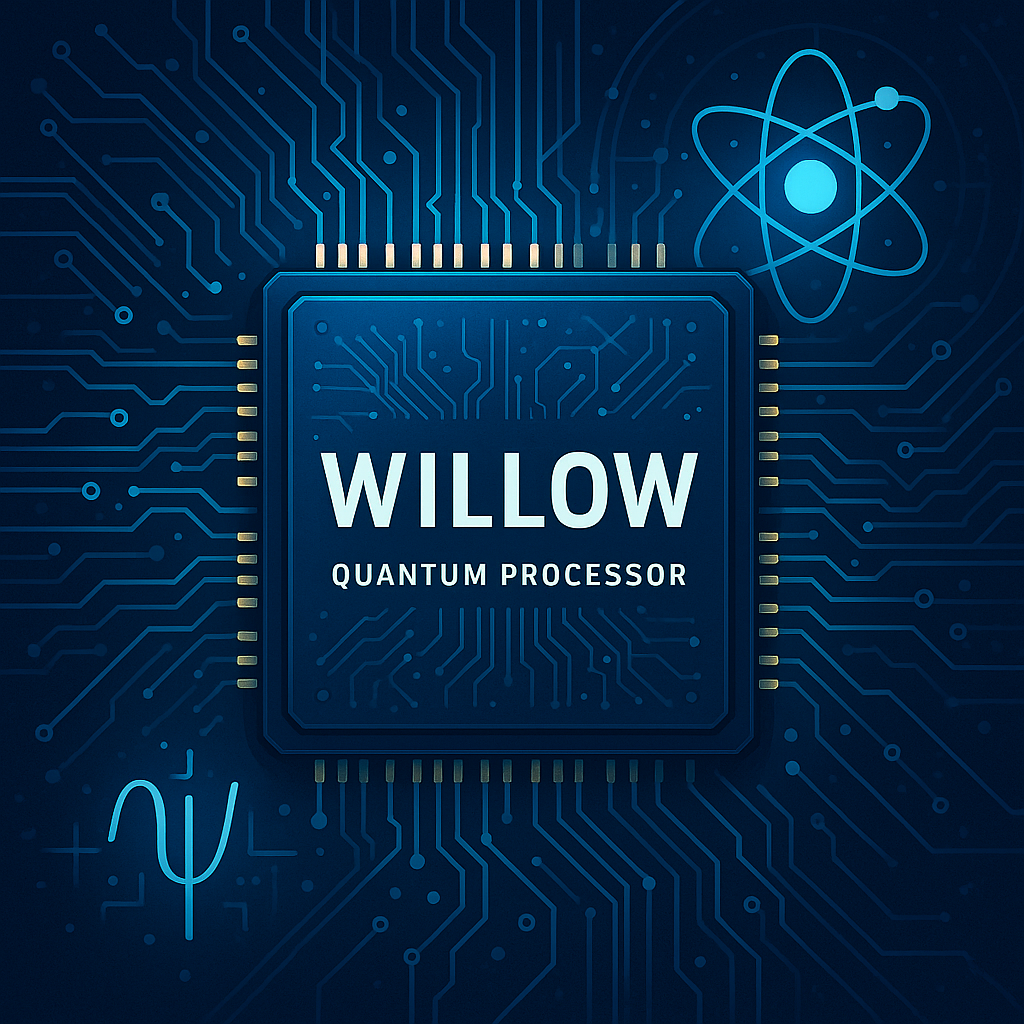
Google’s Quantum Chip and the Multiverse Metaphor
In December 2024, Google quietly dropped what may go down as one of the most significant hardware announcements in tech history. The company introduced Willow, a 105-qubit quantum processor that didn’t just edge the field forward—it leaped. And then, in true internet fashion, things got weird.
On paper, Willow achieved two unprecedented technical milestones. First, it demonstrated exponential error correction: the more qubits it used, the lower the overall error rate became—a reversal of the usual quantum curse. This is the holy grail in quantum computing, a key requirement for scaling these systems into something commercially viable. Second, it solved a Random Circuit Sampling problem in under five minutes, a computational task so complex that simulating it with a traditional supercomputer would reportedly take longer than the age of the universe (estimated at ~1025 years).
Impressive? Absolutely. But then came Hartmut Neven, head of Google’s Quantum AI program, with a tantalizing quote that captured the imagination of journalists and sci-fi fans alike. He stated that the chip's performance "lends credence" to the Many-Worlds Interpretation of quantum mechanics. In other words, some physicists believe quantum computers might be tapping into parallel universes to do their calculations.
Within hours, headlines exploded. “Google’s Quantum Computer Uses Other Universes to Calculate” read one article. “Multiverse Math?” teased another. Even more reserved publications like The Guardian and Business Insider couldn’t resist the allure of a quantum computer whispering across dimensions.
But here’s the reality: the Many-Worlds reference is metaphorical, not empirical. It’s based on one interpretation of quantum physics—an elegant but unverified view that suggests all possible outcomes of quantum interactions do occur, each in its own universe. While it's a popular theory in physics circles, there’s no direct evidence that computation literally “branches” across worlds.
Still, the quote served its purpose: it brought quantum mechanics into public discourse, however sensationalized. And to be fair, it wasn’t entirely inappropriate. The complexity of quantum computation—where data can exist in superpositions, interfere with itself, and become entangled with other states—does challenge our classical intuitions. The Many-Worlds metaphor captures that alien-ness, even if it oversimplifies the physics.
Quantum purists and physicists were quick to push back. On Reddit and Hacker News, discussions erupted. One top-voted comment summarized the mood bluntly: “It’s literally just a faster computer… no one is tapping into parallel universes.” Others explained that quantum speedups are fully explainable within standard quantum mechanics using unitary operations, interference, and entanglement—no need for metaphysics.
So what did Willow actually prove? That scalable, fault-tolerant quantum computing is no longer theoretical. The chip didn’t just run a one-off quantum demo; it ran it with increasing stability as it scaled. That reverses years of pessimism around quantum error rates spiraling out of control. It's a bit like building a skyscraper that gets more earthquake-proof the taller it becomes.
Yet despite the hype, real-world quantum advantage, the point at which quantum computers outperform classical systems on meaningful, practical problems—remains a work in progress. Solving Random Circuit Sampling isn’t useful in itself. It’s a benchmark, not a breakthrough in materials science, logistics, or medicine. That said, benchmarks are important. They lay the groundwork for useful applications in fields like cryptography, drug discovery, machine learning, and quantum chemistry.
Google has signaled that its next goal is just that: to move beyond synthetic benchmarks and tackle real-world problems with quantum systems. The company expects such demonstrations of practical value—where quantum is not just faster, but transformational—to arrive sometime before 2030.
In the meantime, we can expect more wild quotes, multiverse metaphors, and speculative headlines. And maybe that’s okay. After all, quantum computing is an alien frontier, bending logic and language alike. If a little drama helps the public engage with one of the most complex technological revolutions of our time—well, let them have their parallel universes.
Because behind the media buzz, something very real is happening: the quiet, relentless march toward machines that think in probability, not certainty. And Willow, with its ghostly calculations and impossible speed, is a signal that we’re closer than ever to making that future real—no matter how many worlds it takes.